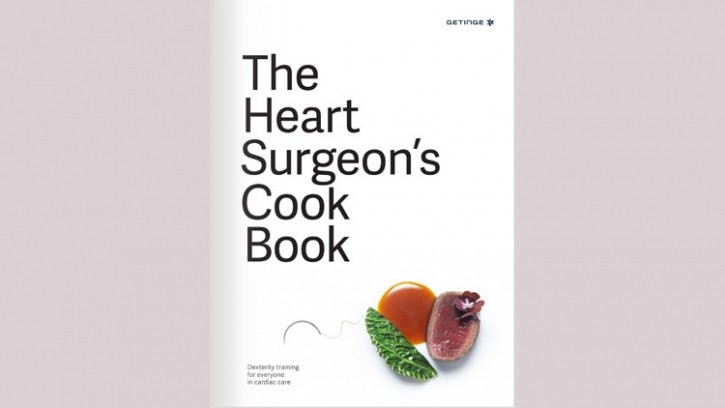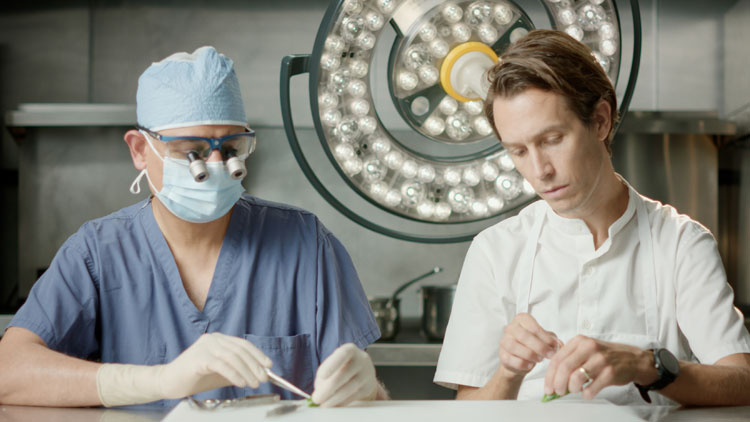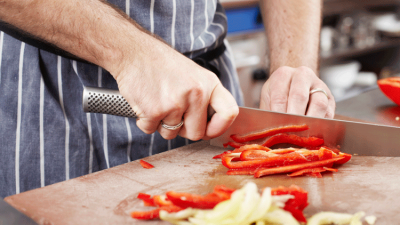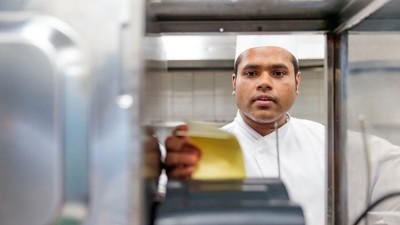The Lowdown: The Heart Surgeon’s Cook Book

This sounds a bit gruesome…
Don’t worry, we’re not going all Hannibal Lecter on you. The title might evoke ‘hearty’ nose-to-tail dishes that would make Fergus Henderson proud, but it’s actually been created for heart surgeons rather than to demonstrate how to cook the vital organ.
Let’s cut to the chase then, what’s the diagnosis?
Cutting is the operative word here. In order to get into the book, the reader must make an access incision (preferably with a scalpel although we used a kitchen knife) presumably to get them into the spirit of the book, which is to give a bit of dexterity training to those working in cardiac care in a slightly more unusual way.
Tell me more
The book is a collaboration between Fredrik Berselius, owner of two Michelin-starred Brooklyn restaurant Aska, and Dr. Nirav Patel MD (pictured below), an eminent cardiovascular and thoracic surgeon who also practices in New York. They have collaborated with Getinge, a global cardiovascular device provider, to create what they believe is ‘the world’s most difficult cookbook’ with dishes that only the most nimble-fingered will be able to achieve.
We’re not talking beans on toast, then?
Certainly not. There are nine recipes in total, which include kingfish roe with green gooseberry; sea scallop and turnip in warmth broth; hake with Swedish dark beer, flowering dill and hasselback turnips; roasted quail with truffle and ramp; and a stuffed chicken wing.
Sounds more Septime than septum. Are the dishes that difficult?
They do require a steady hand. Dishes were devised by Berselius, who first presented some ideas that were then improved from a manual skill perspective and tweaked so that they require tools that surgeons use. Each dish is said to include at least one surgical technique familiar to surgeons that puts dexterity to the test, not only for their hands but also for their minds given the high levels of concentration needed. The quail dish, for example, requires the use of a needle a thread – actually fine cooking twine – to stitch the skin together, while a langoustine dish has the need for a syringe with which to inject langoustine butter. Others require dexterity with assembly and, of course, the occasional bit of tweezer action that has now become a mainstay of many a Michelin-starred kitchen. “Touching and feeling the fish is similar to what we do in surgery with the tissue before incising it,” says Dr Patel, who performs approximately 350 operations every year, and enjoys cooking as a hobby. “Knowledge of line, of muscle and anatomy is key to any surgical procedure. Making the perfect petals is a good way to practice precise cutting with a scalpel, and assembling the rose and caviar requires gentle handling, like fine surgery, so as not to damage the tissue.”
It all feels a bit clinical...
That’s the point. Rather than being a comment on how the worlds of haute cuisine and surgery can collide, the book’s main premise is to be a practice tool for surgeons. As Carsten Blecker, Getinge’s chief commercial officer says: “The Heart Surgeon’s Cook Book celebrates their phenomenal skills, whilst also being a great training tool. Surgeon’s consistently practice their skills – either in the operating room or at home, to maintain both their focus, physical and mental dexterity. This cookbook can help them to do that in an innovative and creative way.”
What can we learn from it?
The conclusion is that, with the right, guidance, tools and recipes, heart surgeons have the ability to create some Michelin star worthy food. Look out for a potential follow up title, Heart Surgery for Chefs, where chefs get to perform aortobifemoral bypass surgery having first practised with a stuffed ox heart dish.
Discover more about the book here




















